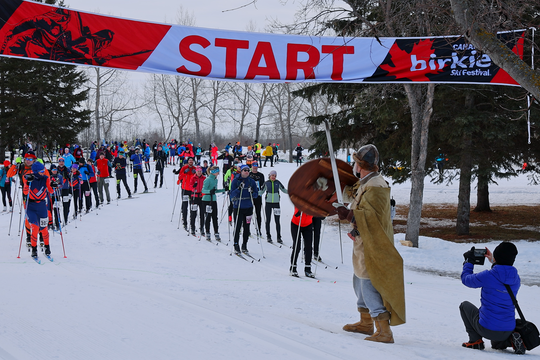The Origins of the Canadian Birkebeiner Ski Festival

Invented traditions, winter sportscapes, and heritage sport tourism in sustainability and the UNESCO Beaver Hills Biosphere
by PearlAnn Reichwein
The Canadian Birkebeiner Ski Festival emerged as the world’s third Birkebeiner cross-country ski loppet in 1985, emulating the Norwegian Birkebeiner and the American Birkebeiner. This study examines the early years of the Canadian Birkebeiner as a heritage sport tourism event with routes near Edmonton, Alberta, that became an annual festival and attraction in western Canada. Invented tradition, sportscapes, and heritage sport tourism are a conceptual frame to analyse how the Festival represented the Birkebeiner legends, how skiers and skiing constituted landscapes, and how the event contributed to sustainability.
The Canadian Birkebeiner resulted in a winter sport festival and sportscape that shaped cross-country skiing, trails, and public lands, and was indicative of fluid social relations and rural place making by means of skiing. Based on archival and oral history sources, the study argues the Canadian Birkebeiner was an invented tradition that originated with a ski loppet instrumental in the negotiation of terrain for cross-country skiing that contributed to winter sportscapes and heritage sport tourism in the Cooking Lake-Blackfoot Provincial Recreation Area, and, ultimately, within the UNESCO Beaver Hills Biosphere. It contributes to studies of winter events with local and broader implications for sustainable heritage tourism.
Comments